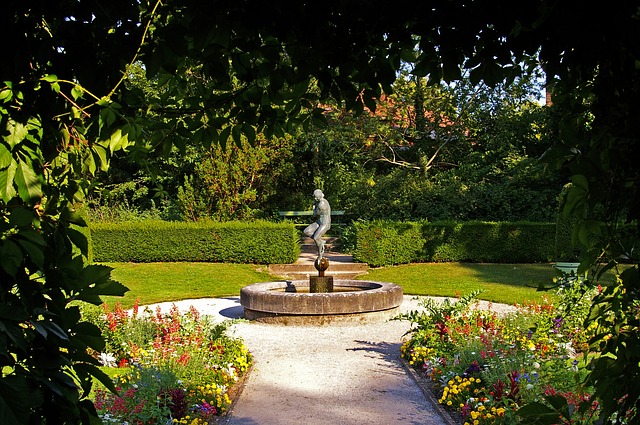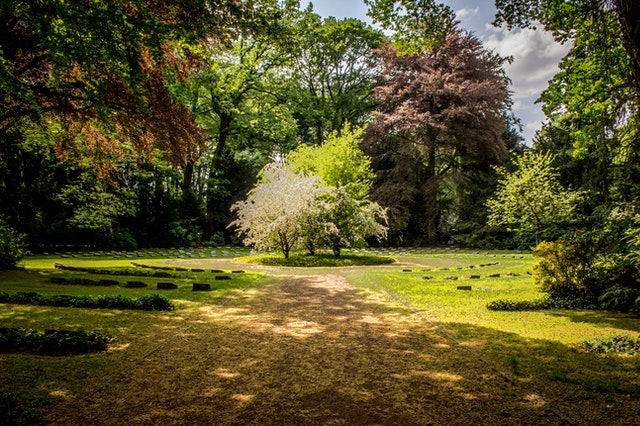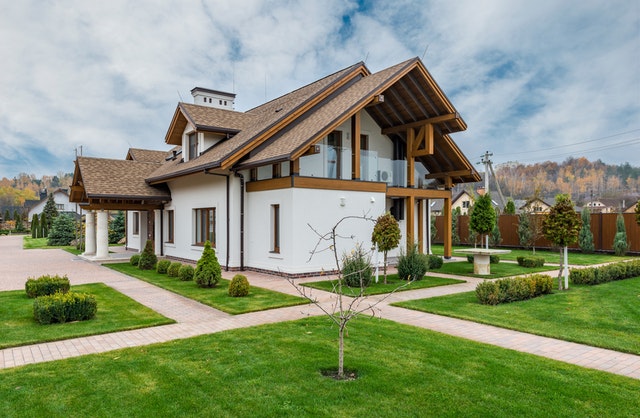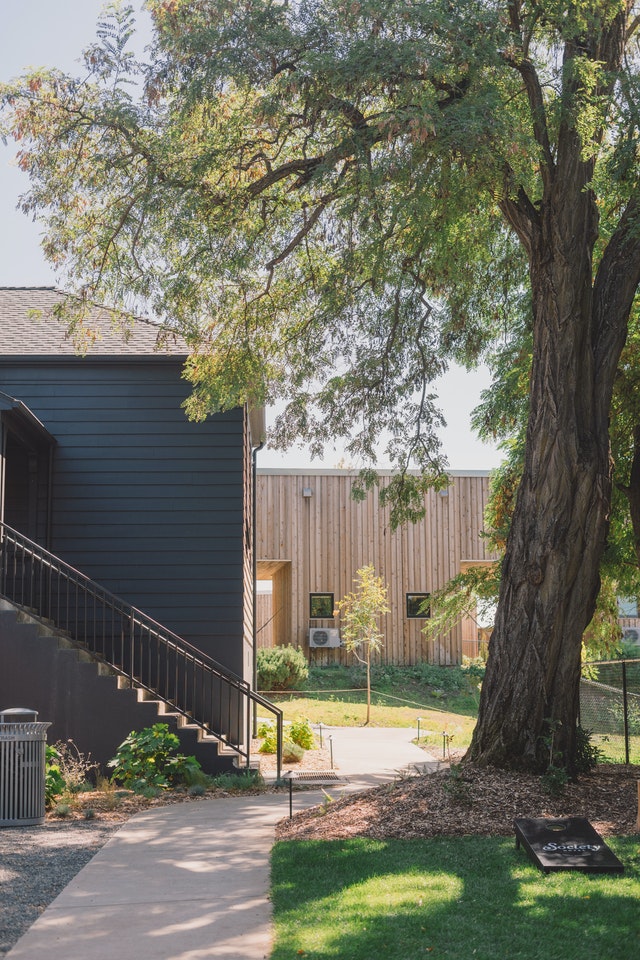Jungle Garden
Garden gives the most pleasant feel when one enters into it. Maintaining the garden in different seasons would be hard for most of the people because it needs a good care based on the seasons. The “Jungle Garden” describes the whole lot about the garden and its important aspects to people’s life in the Book called “Small family gardens” by “Caroline Tilston”. We thank author for this amazing book where we able to read about the wonderful things about the garden.
Jungle
Design Brief
- A city oasis
- Green in summer and winter
- Screening from neighbours
- Access to studio at rear of garden
Features
- Chequerboard pattern
- Black basalt water featire
- Wide steps up to main garden
The garden here was small, overgrown and neglected when Debbie Robersts and lan Smith from the garden design company Acress Wild first saw it. What’s more, the garden was about to shrink. The owners were building an extension out from the house and were planning a studio for the far end. What was left measured only 5.5 metres by 10 metres.
Not only was the space small, there was another challenge: a steep change in level from the entrance up to the main part of the garden. Unusually, the main way into the garden is from the basement kitchen and the ground rises by over a metre from here as you move into the garden. So a forbidding wall could have been the main view from the kitchen.
To Lawn Or Not To Lawn?
In a small garden there are definite disadvatages to having a lawn, but on the other hand….
In favour of lawns in small gardens
- They’re relatively cheap way to cover ground—for the price of a handful of seed you can solve the problem of what to put in the garden.
- Compared to other planting lawns are, on the whole, lower maintenance.
- Lawns are nice to lie on and children love to play on them. It’s hard to practise handstands on concrete.
- They give year-round greenery, a very important factor in the city in the middle of winter.

Against lawns in a small garden
- You need somewhere to store a lawnmower. Having sufficient storage for a lawnmower can be quite an impostition in a small garden. Also just getting the lawnmower out for a tiny area can be a bind (or am I just exceptionally lazy?).
- Lawns suffer lots of wear and tear. In a small area a lawn can get worn quite shady and lawns tend not to like dark areas.
- Compared to decking or stone, lawns are high maintenance.
- When there’s a lawn you immediately have a large flat surface, usually dead centre in the garden—not necessarily a bad thing, but it does restrict the design possibilities.
- In very dry summers lawns bake and go brown, in very wet winters they become impassable. Access across the lawn can be a real problem in winter.
- Children can’t ride bikes on a lawn or play in soggy winter weather.
- Lawns invite no wildlife into the garden, while the right planting might.
Just looking at the number of points there’s more to be said against having a lawn, but life is rarely so simple and especially if you have children there is a natural draw towards having grass.
However, it might be worth looking at artificial grass, which solves some but not all of the problems.
Low-maintenance, evergreen plants for creating a city jungle
These are the sorts of plants you can put in and leave alone. For the first year you can help them get established with extra water in dry spells, but otherwise they look after themselves.
Big plants, Medium plants, small plants
- Bamboos Bamboos are happy in sun or light shade and come in many forms, but for low maintenance the best are the ones that don’t spread too far, too fast. The most popular must be Phyllostachys nigra with black stems and Phyllostachys aurea with golden stems. For more leaves and less stem try /fargesia murielae.
- Bush ivy Huge leaves and an ability to grow in the shadiest places make this a wonderful choice for city gardens.
- Chusan palm This is a great hardy palm, the one to go for if you’re not a gardener.
- Oregon grape Oregon grapes have a bad reputation, being seen as ‘supermarket’ planting, but they will put up with most conditions. Their glossy, splky, evergreen leaves fit well with jungle planting.
- Spanish dagger These are best planted in full sun where the sharp rigid leaves make a strong statement and can cast wonderful shadows on walls or floors.


6 .New Zealand flax These have sword-like leaves from a central base. Some are a little garish, but the new (almost) black-leaved variety, Phormium ‘Platt’s Black’, is wonderful and a great foil for lighter plants.
7 .Black Grass This short, grass-like plant comes in a lovely deep black and can be used to mirror the black Phormium described above. It can take its time to get established, so either buy lots or be patient.
8. Elephants’ ears You have to be a little careful with elephants’ ears—they are ground cover plants that flower in late winter, but some of them are truly elephantine and ugly. But try the one called ‘Bressingham Ruby’, whose dark purple leaves are beautiful.
9. Mind-your-own-business This is a low-growing plant that will spread along cracks in paving, forming a lovely green mat.
Tips for water in the garden
Water adds another dimension to any garden. When it’s still it has calming, reflective qualities; when it moves it gives life, light and sound to the garden.
- Lighting the water feature can give a lot of added pleasure, especially if it’s near the house. Lighting from under the water is much better than spotting a beam across its surface, which will just highlight any rubbish on the top.
- There are two types of water feature the ones you can buy ‘off the shelf’ and those that are made specially for your garden. The former are, usually, cheaper than the latter.
- Think about what you would like from the water, why you want to have it at all. Perhaps it’s for the sound (do you want a calm gurgle or a rushing cascade?), for reflections, for water plants, or for wildlife?
- Answer these questions and the field narrowsdown. Another way to guide the choice is to ask whether you want a formal or informal feature. This will ofter be dictated be your ideas for the rest of the garden.
- If you have an expanse of water, think about using stepping stones (or a bridge if you must).
- If you want moving water you will need a power source. But if it’s closed system-and most are-you don’t need a water supply, only water to top it up occasionally.
- Whichever you choose, the most successful water features work with the garden as part of the overall design and aren’t just plonked on top as an afterthought.
- It is worth planning for the future. If you intend your garden to last through the whole of your family life, think about where teenagers and old folk (that’s you) might want to sit and while away an afternoon by a pond.
- Any depth of water can be dangerous for small children. One solution is to put a grille just under the surface of water; these can be cut specifically to fit you pond. But even then a theoretical risk remains and it might be better to stick to a feature without standing water if you have very small children.
- Consider where the water feature will be viewed from and what it will be seen against.


